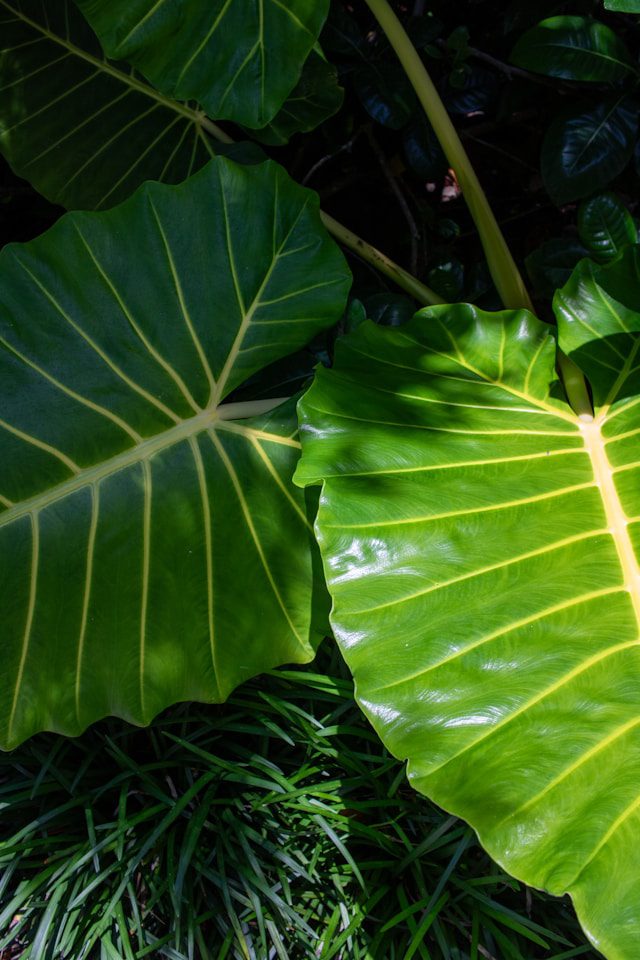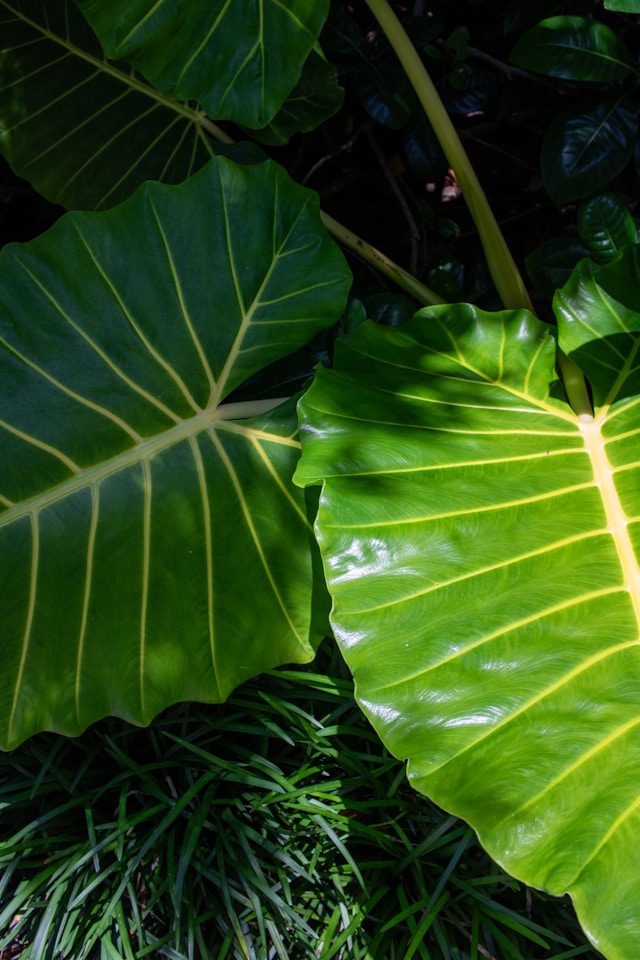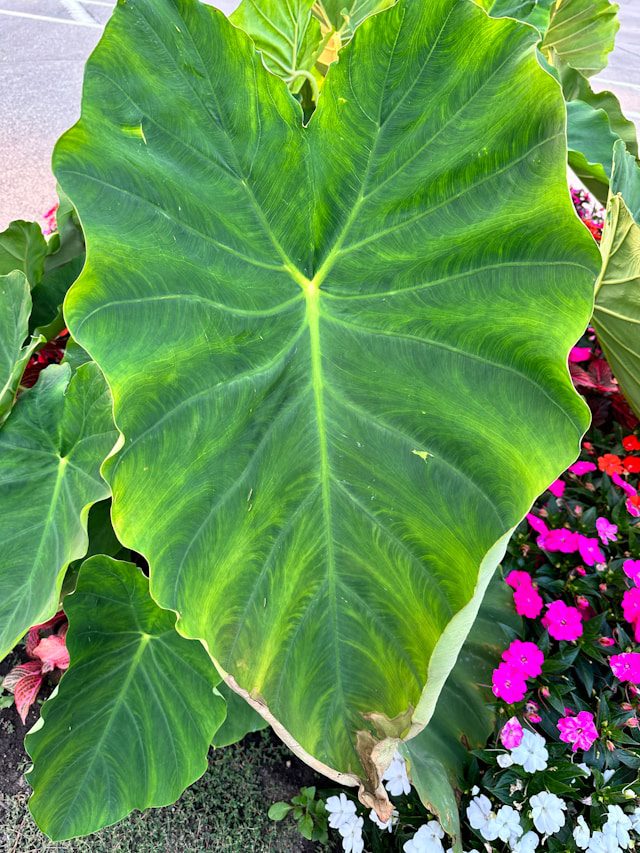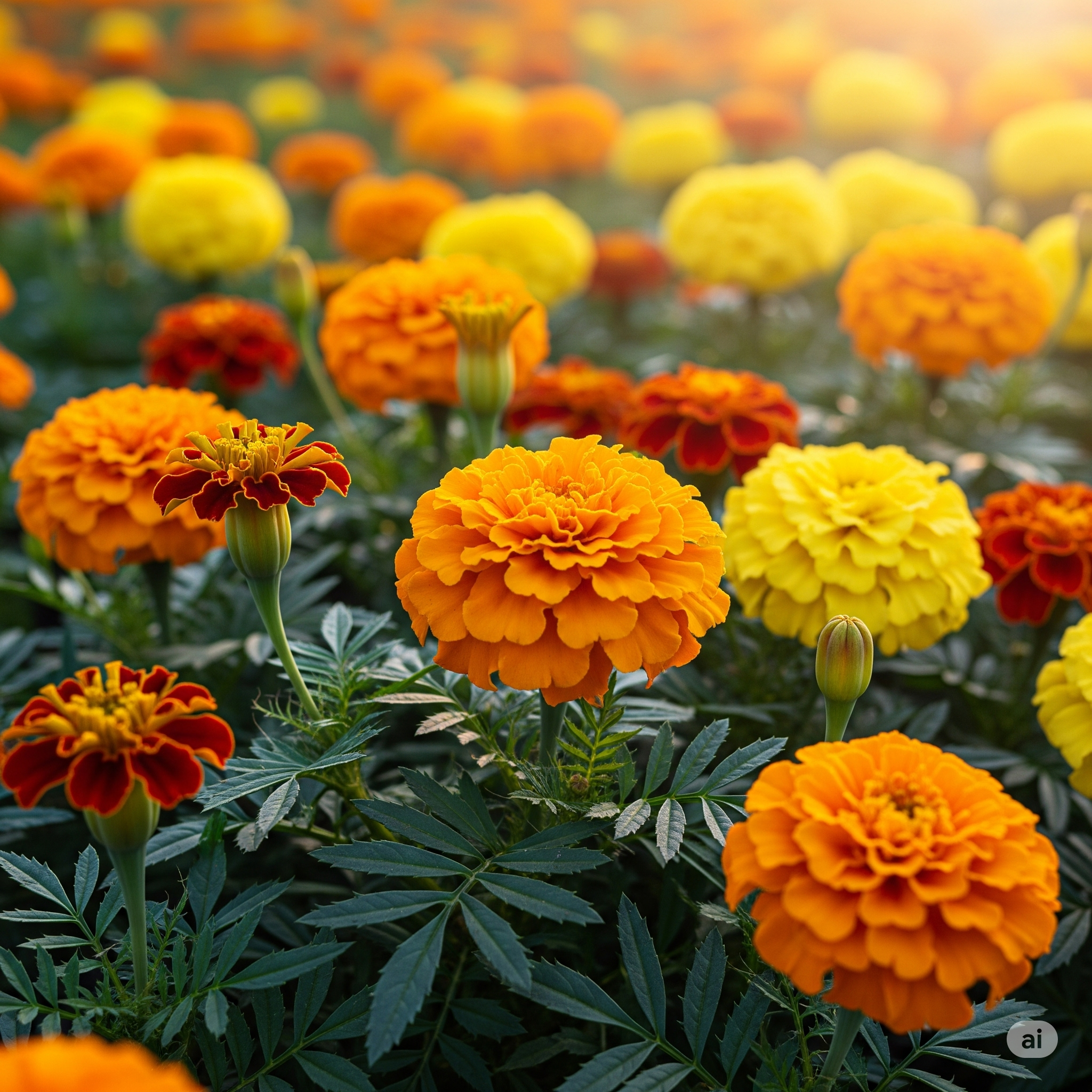Some links on this Website are affiliate links, meaning we may earn a commission if you make a purchase, at no additional cost to you. Please read our full Affiliate Disclosure for more details.
If you’re looking to add a bold, tropical vibe to your garden or indoor space, the Elephant Ear Plant is the perfect pick. With its large, dramatic leaves resembling elephant ears, this plant instantly transforms any area into a lush paradise. But while it looks exotic, learning how to grow and care for Elephant Ear Plant isn’t as hard as you might think.

In this guide, you’ll learn everything you need to know about Elephant Ear Plant care; from choosing the right light conditions to proper watering, soil, and even overwintering tips, so your plant stays healthy and vibrant all year round.
7 Easy Tips For Growing Plants Indoors
Understanding the Elephant Ear Plant
The Elephant Ear Plant refers to several tropical species in the genera Colocasia, Alocasia, Caladium, and Xanthosoma. They are prized for their large, heart-shaped leaves that can grow up to 3 feet long! These plants thrive in warm, humid environments and can be grown indoors as houseplants or outdoors as landscape showstoppers.
Common varieties include:
- Colocasia esculenta (Taro)
- Alocasia macrorrhizos (Giant Taro)
- Caladium bicolor (Angel Wings)
- Xanthosoma sagittifolium
They are native to warm, humid regions of Asia, Africa, and South America, and are widely grown for their ornamental foliage. While Colocasia and Alocasia are the most common types, each has slightly different preferences when it comes to water and sunlight.
Tips To Grow And Care For Elephant Ear Plants
Elephant Ear Plant Light Requirements
Light is one of the most important factors in the health and growth of your Elephant Ear Plant. These plants love bright, indirect light but can tolerate some direct sunlight, especially in the morning or late afternoon.
When grown outdoors, they perform best in partial shade, though some varieties like Colocasia esculenta thrive even in full sun if given enough water. For indoor plants, place them near a window with plenty of natural light, but keep them away from harsh midday sun that can scorch their leaves.
If your plant starts showing pale or droopy leaves, it might be signaling that it’s not getting enough light. On the other hand, burnt or crispy leaf edges can indicate too much direct sunlight. Finding that balance is key to keeping your Elephant Ear Plant lush and healthy.
💡 Tip: Rotate your plant every few weeks to ensure all sides receive equal light exposure and to promote even growth.
5 Best Gardening light meter For Plant Care
Watering and Humidity

The Elephant Ear Plant loves moisture. Its natural habitat is in tropical forests and wetlands where humidity levels are consistently high. To replicate that environment at home, you’ll need to keep the soil evenly moist but not waterlogged.
Water your plant thoroughly whenever the top inch of soil feels slightly dry to the touch. During the active growing season (spring and summer), you may need to water more frequently, especially if the weather is hot or dry. However, in the cooler months, reduce watering to prevent the roots from sitting in soggy soil.
Because this plant thrives in high humidity, misting the leaves regularly or placing a humidifier nearby can help maintain ideal conditions indoors. Another easy way to raise humidity is by setting your pot on a tray filled with pebbles and water, ensuring the bottom of the pot doesn’t sit directly in the water.
Warning: Avoid letting your plant’s soil dry out completely. Prolonged dryness can cause the leaves to wilt, yellow, or die back.
How To Care For ZZ Plant Indoors
Are Garden Plants Dangerous for Dogs?
The Best Soil and Fertilizer for Elephant Ear Plants
To grow Elephant Ear Plant successfully, the right soil mix is essential. These plants prefer rich, well-draining soil that retains moisture without becoming compacted or waterlogged. A mix of loam, compost, and peat moss or coco coir provides the perfect balance of nutrients and aeration.
They also prefer slightly acidic to neutral soil with a pH between 5.5 and 7.0. Regularly enriching the soil with organic matter like compost or aged manure helps support their vigorous growth.
During the growing season, feed your Elephant Ear Plant every 2 to 3 weeks with a balanced liquid fertilizer (such as a 20-20-20 NPK formula). This ensures it receives all the essential nutrients needed to produce large, vibrant leaves. Stop fertilizing in late fall or winter when the plant enters its dormant stage.
How To Stop Plants From Growing Back
How to Grow Elephant Ear Plant

1. Growing from Bulbs or Corms
Elephant Ear Plants are often grown from bulbs or corms rather than seeds. Plant the bulbs about 2 to 4 inches deep, making sure the pointed end faces upward. Each bulb should have enough space — ideally 18 to 24 inches apart — to allow the leaves room to spread. Water well after planting, and keep the soil consistently moist until new shoots emerge.
2. Growing Indoors
If you’re growing your Elephant Ear Plant as a houseplant, choose a large container with good drainage holes. Place it in a warm spot with bright, indirect light. Maintain indoor temperatures above 20°C (68°F) for optimal growth. Regular misting or using a humidifier will keep the plant comfortable in drier indoor environments.
3. Outdoor Planting
Outdoors, plant your Elephant Ears in the spring after the danger of frost has passed. Choose a location with rich, moist soil and partial sunlight. Mulching around the base helps retain moisture and keeps the roots cool. During summer, ensure they’re watered regularly, especially during dry spells.
Overwintering
Elephant Ear Plants are not frost-tolerant, so if you live in a region with cold winters, you’ll need to protect them. When temperatures begin to drop below 10°C (50°F), the foliage may start to die back, this is normal.
For outdoor plants, carefully dig up the bulbs after the first frost, clean off excess soil, and let them dry for a few days. Store the bulbs in a cool, dark, and dry place, such as a basement or garage, until the next planting season.
If you’re growing the plant indoors, simply reduce watering and let it rest through the winter. When spring arrives, resume regular watering and fertilizing, and your Elephant Ear will bounce back with fresh new growth.
Pruning and Maintenance Tips
Elephant Ears are low-maintenance, but a little regular care keeps them looking their best. Trim off any yellowing or damaged leaves to encourage new growth and maintain the plant’s tidy appearance. You can also wipe the leaves with a damp cloth to remove dust, which helps them absorb more light and improves photosynthesis.
Check your plant occasionally for pests such as spider mites, aphids, or mealybugs. These can be controlled by wiping the leaves with a mild soap-and-water solution or using an organic insecticidal spray.
Propagating Elephant Ear Plants

Propagation is one of the easiest and most rewarding parts of Elephant Ear Plant care. The simplest method is by dividing the bulbs or corms during repotting or after winter storage.
- Gently separate the small offsets (baby bulbs) from the main bulb.
- Replant each in a pot or garden bed with moist, well-draining soil.
- Keep them warm and humid until new growth begins.
With proper care, these new plants will quickly grow into lush, full-sized Elephant Ears.
Common Problems and Their Fixes
Even with the best care, your plant may sometimes show signs of stress. Here’s how to handle the most common issues:
- Yellow Leaves: Often a sign of overwatering or poor drainage. Allow the soil to dry slightly before watering again.
- Drooping Leaves: Can indicate low humidity or insufficient light. Move the plant to a brighter location and increase moisture levels.
- Brown Leaf Edges: Usually caused by low humidity or excess fertilizer. Mist more often and reduce feeding frequency.
- Stunted Growth: May be due to low temperatures or nutrient deficiency. Keep the plant warm and ensure regular feeding during the growing season.
Frequently Asked Questions (FAQs)
1. How much light does an Elephant Ear Plant need?
Elephant Ear Plants thrive in bright, indirect sunlight but can tolerate partial shade outdoors. Avoid prolonged exposure to harsh, direct afternoon sun.
2. How often should I water my Elephant Ear Plant?
Keep the soil consistently moist but not soggy. Water more during warm months and reduce watering when the plant is dormant in winter.
3. Can Elephant Ear Plants grow indoors?
Yes! They make excellent indoor plants if given bright light, warmth, and humidity. Just remember to keep the soil moist and avoid cold drafts.
4. Why are my Elephant Ear leaves turning yellow or brown?
This can result from overwatering, low humidity, or too much fertilizer. Adjust watering habits, increase humidity, and feed less often.
5. Are Elephant Ear Plants toxic to pets?
Yes. The plant contains calcium oxalate crystals, which can irritate the mouth and throat if eaten. Keep it out of reach of pets and children.


